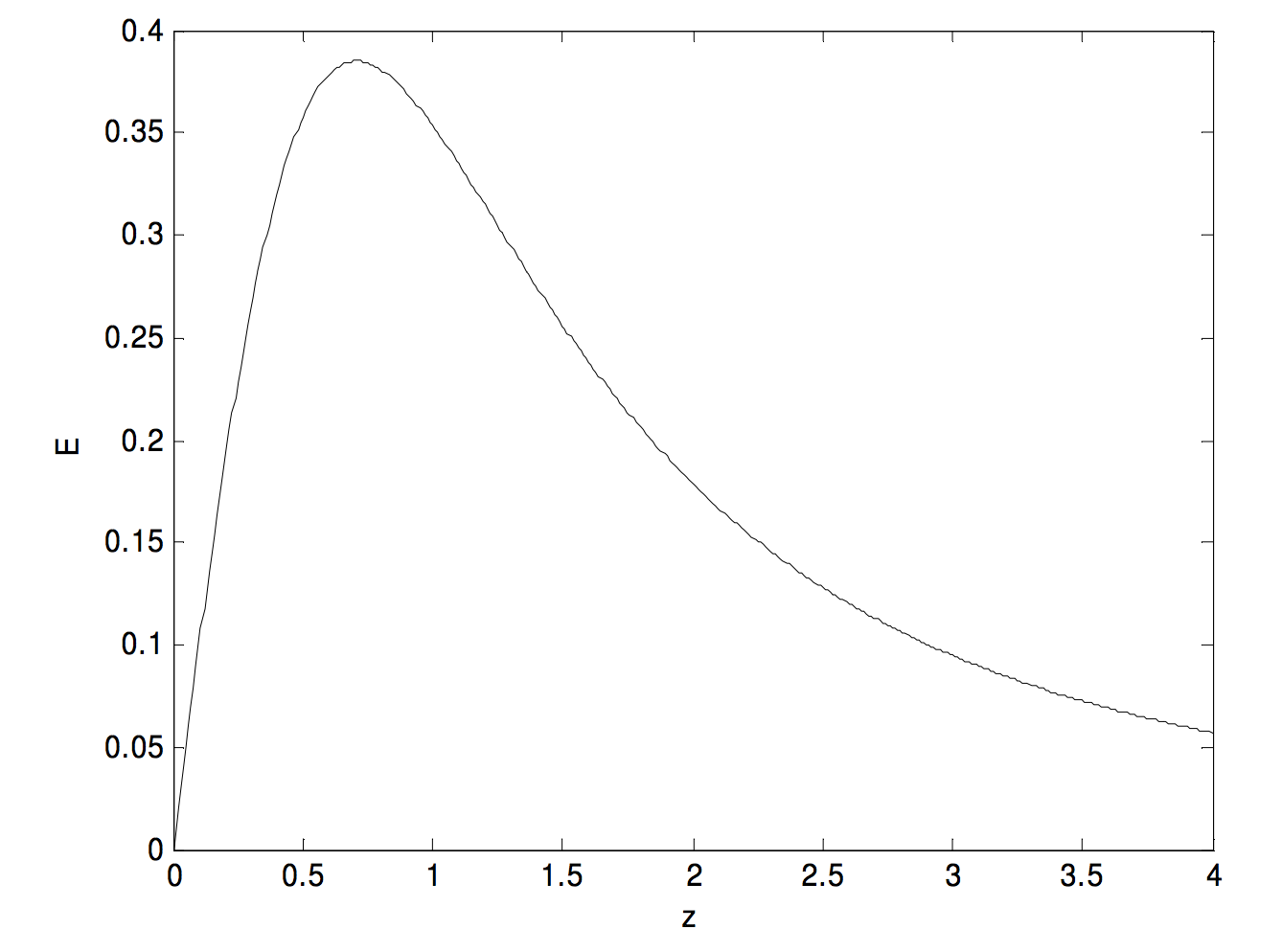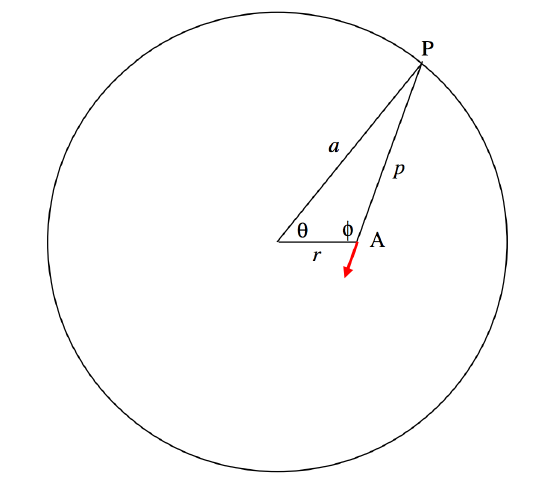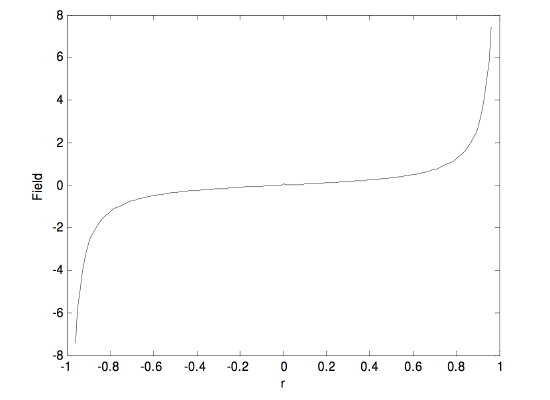1.6D: Field on the Axis of and in the Plane of a Charged Ring
( \newcommand{\kernel}{\mathrm{null}\,}\)
Field on the axis of a charged ring.

Ring, radius a, charge Q. Field at P from element of charge δQ=δQ4πϵ0(a2+z2). Vertical component of this =δQcosθ4πϵ0(a2+z2)=δQz4πϵ0(a2+z2)3/2. Integrate for entire ring:
Field E=Q4πϵ0z(a2+z2)3/2.
In terms of dimensionless variables:
E=z(1+z2)3/2.
where E is in units of Q4πϵ0a2, and z is in units of a.

From calculus, we find that this reaches a maximum value of 2√39=0.3849 at z=1/√2=0.7071.
It reaches half of its maximum value where z(1+z2)3/2=√39.
That is, 3−72Z+9Z2+3Z2=0, where Z=z2.
The two positive solution are Z=0.041889 and 3.596267.
That is, z=0.2047 and 1.8964.
Field in the plane of a charged ring.
We suppose that we have a ring of radius a bearing a charge Q. We shall try to find the field at a point in the plane of the ring and at a distance r(0≤r<a) from the centre of the ring.

Consider an element δθ of the ring at P. The charge on it is Qδθ2π. The field at A from this element of charge is
14πϵ0⋅Qδθ2π⋅1a2+r2−2arcosθ=Q4πϵ0.2πa2⋅δθb−ccosθ,
where b=1+r2/a2 and c=2r/a. The component of this toward the centre is
−Q4πϵ0.2πa2⋅cosϕδθb−ccosθ.
To find the field at A due to the entire ring, we must express ϕ in terms of θ, r and a, and integrate with respect to θ from 0 to 2π (or from 0 to π and double it). The necessary relations are
p2=a2+r2−2arcosθ
cosϕ=r2+p2−a22rp.
The result of the numerical integration is shown below, in which the field is expressed in units of Q/(4πϵ0a2) and r is in units of a.



